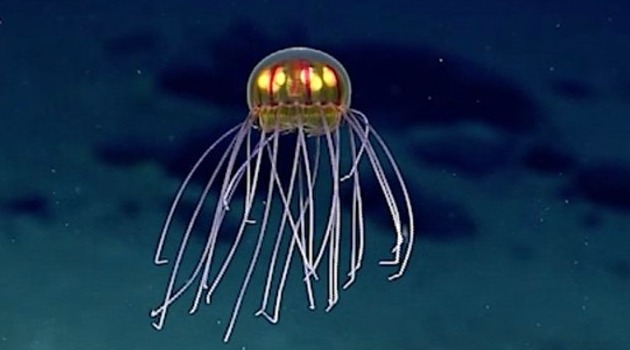
NOAA's expedition to the Mariana Trench, one of the deepest parts of the ocean, has uncovered new findings and hopes to discover even more.
A new discovery by the National Oceanic and Atmospheric Administration (NOAA) shows exactly how little we know about the world’s oceans.
While on a deep-sea expedition, the researchers at NOAA came across a bizarre new species of jellyfish around two miles below the surface. It belongs to a species called Crossota that tends to continually float along for the entirety of its life.
According to Discovery News, the jellyfish was captured on video while the team were searching in a particular part of the deepest ocean called the Mariana Trench in the western Pacific Ocean. Using a remotely operated vehicle (ROV) operated from the research vessel Okeanos Explorer, the team of scientists honed in on an underwater mountain called the Enigma Seamount named because of its rather unknown territory, and found several other features that were previously undiscovered.
“Its morphology is quite different from other seamounts in the region, which generally have a flat top with steep, smooth sides radiating out into narrow ridges,” say the team who took part in the expedition, “By contrast, this one is more circular in form and the sides are much less smooth.”
The newly discovered jellyfish, with its rather alien look, glided smoothly and effortlessly through the water with its two sets of tentacles spreading outwards and a very still, pulsating body. The researchers believe this species is an ambush predator which is typical of the Crossota species.
With deep-sea exploration being difficult due to the immense pressure the further we go towards the ocean floor, technology needs to be more advanced in order to discover what other new species are lurking at the bottom.
“The deep seafloor of the Pacific Ocean is one of the most poorly explored regions on Earth with very little known about the benthic animals that live beyond 3,000 feet in the Prime Crust Zone,” the NOAA said.
Two further legs of the expedition are scheduled for the end of May and June.
image credit: Discovery News

Leave a Reply